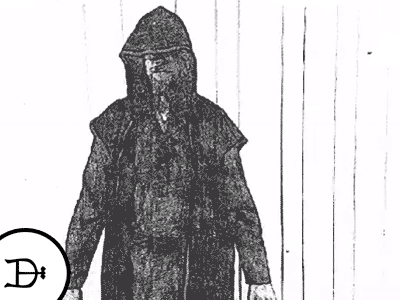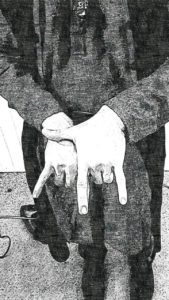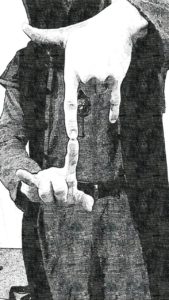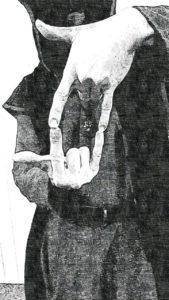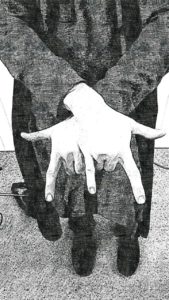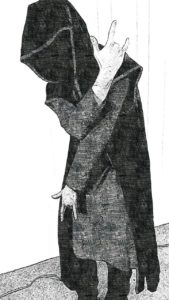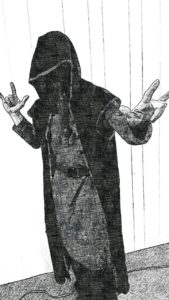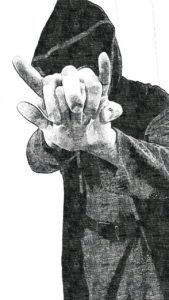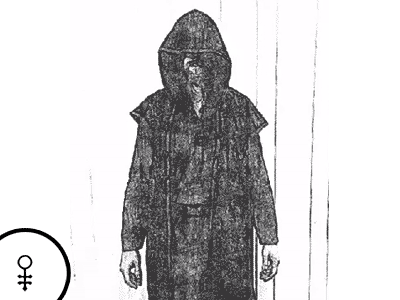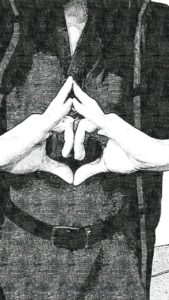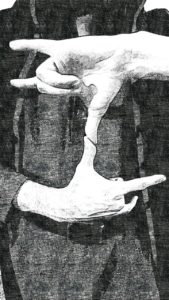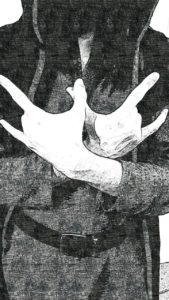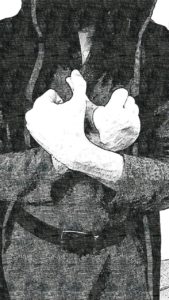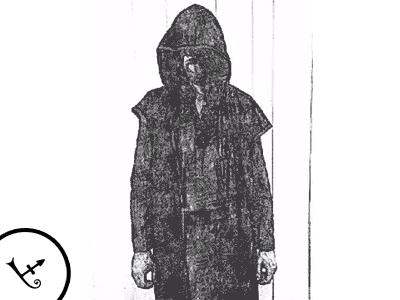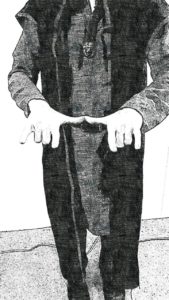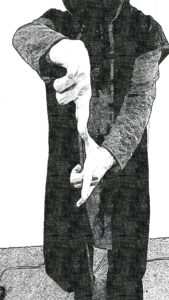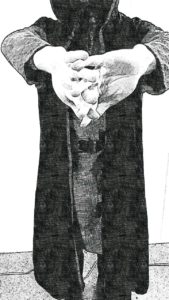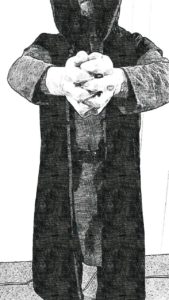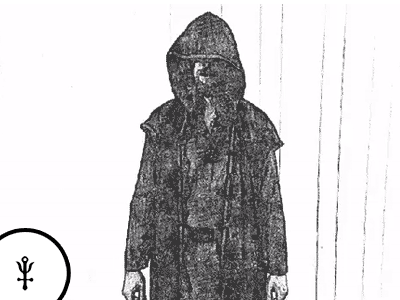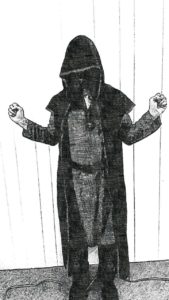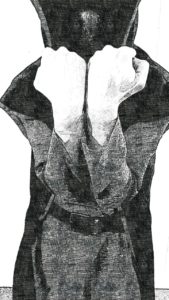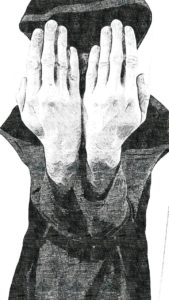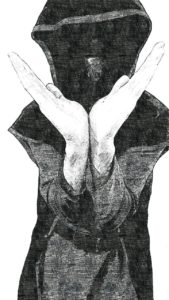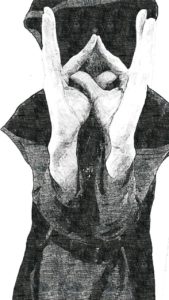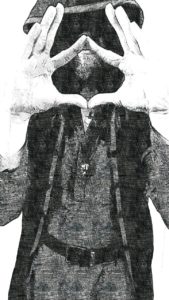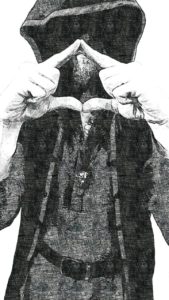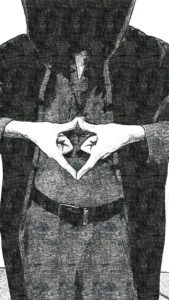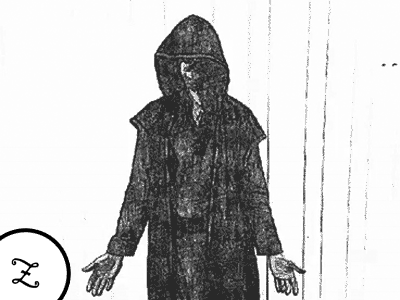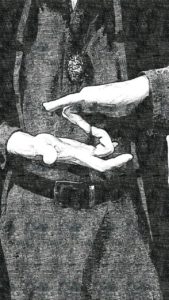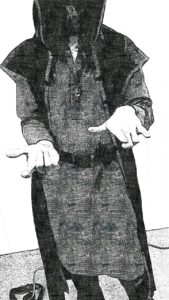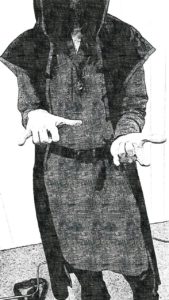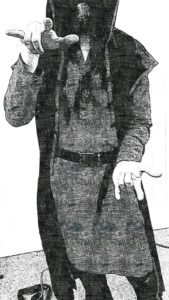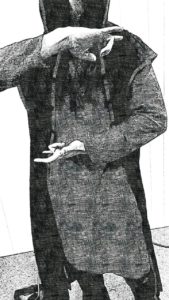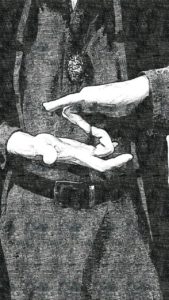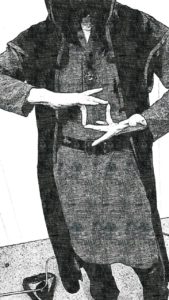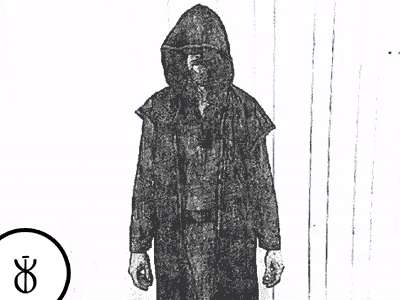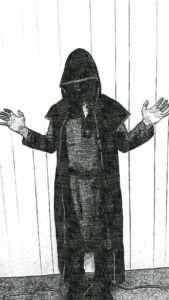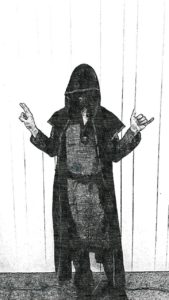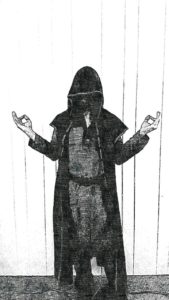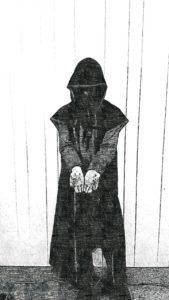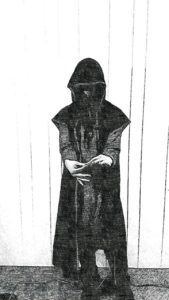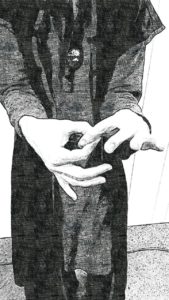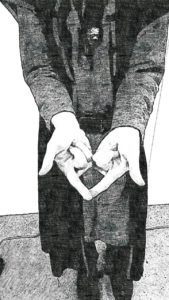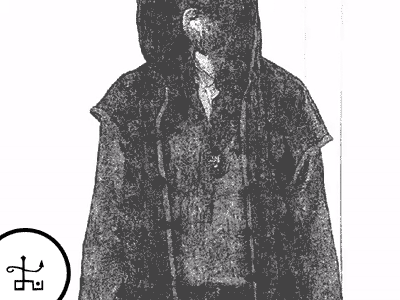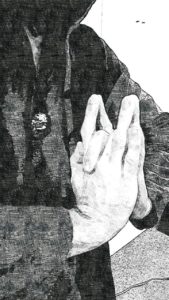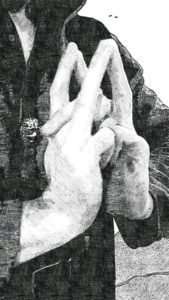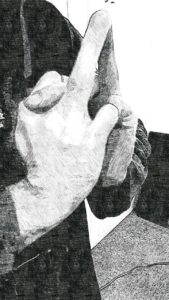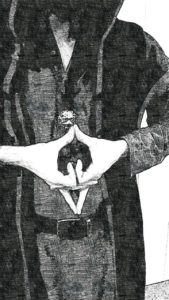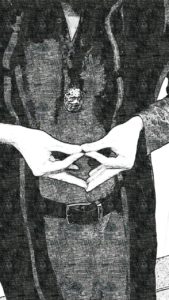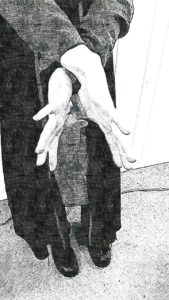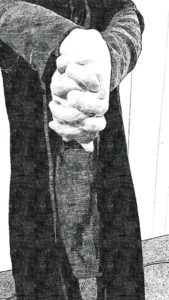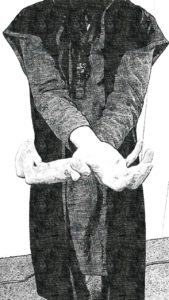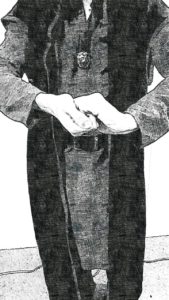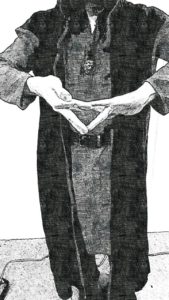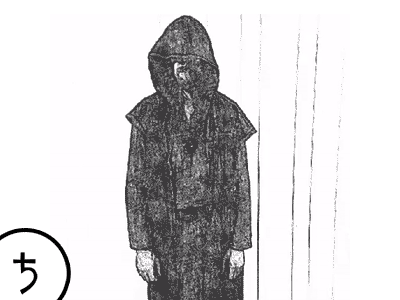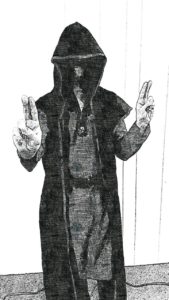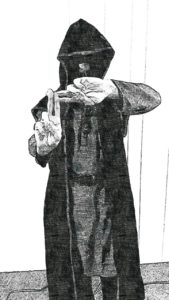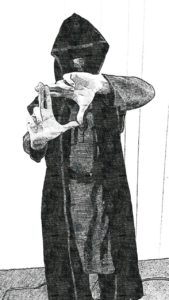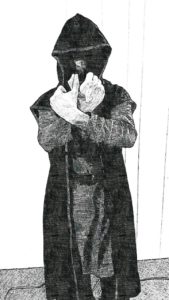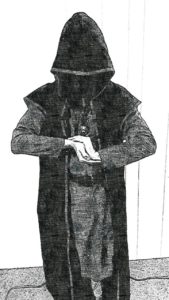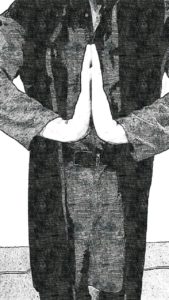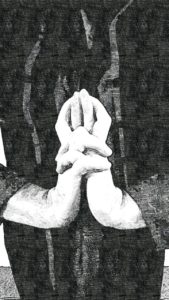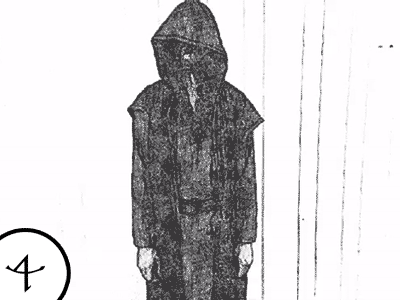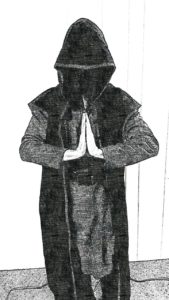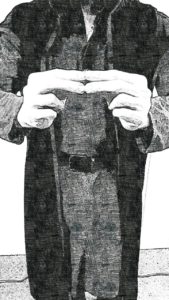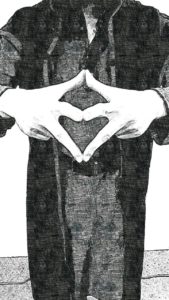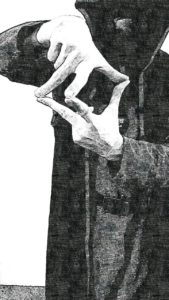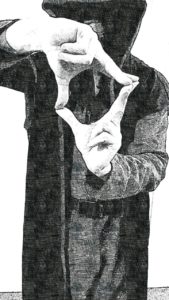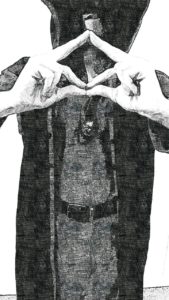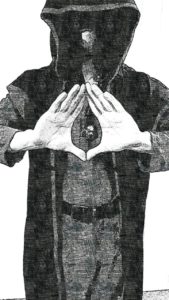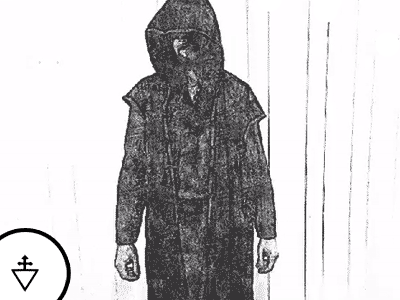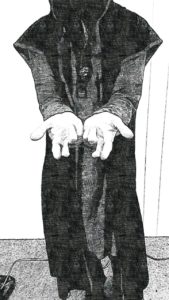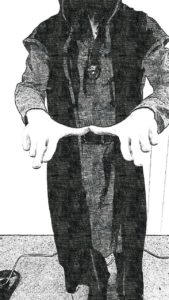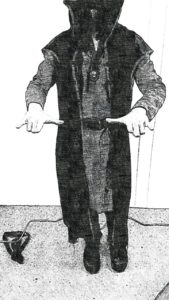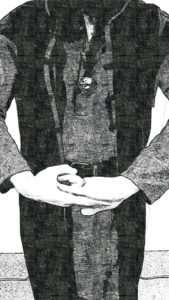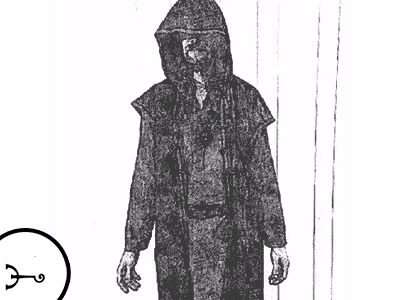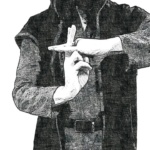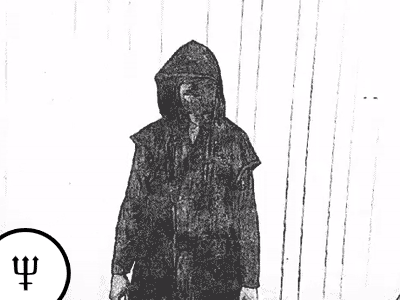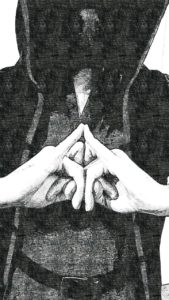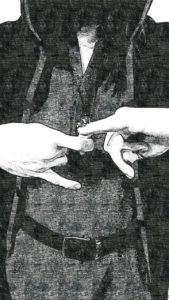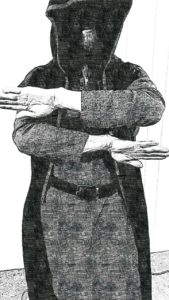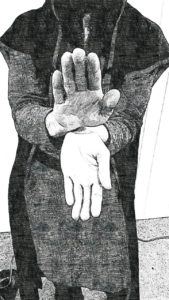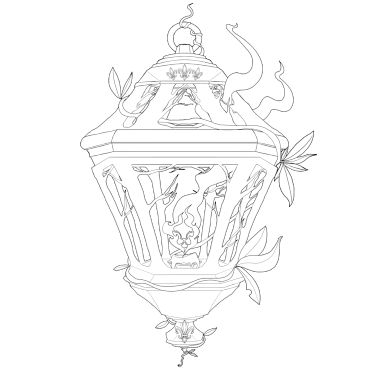Arcane Attainment
Through magic, this world can be changed and manipulated towards perfection. Similarly, through the mage, magic too can be changed and manipulated into a purer form. In its raw form, magic is a powerful beast, unyoked and virtually rampant. For centuries, cloistered magicians have developed ways to further domesticate this force of nature.
Wizards advance through their careers in a number of ways. Each Wizard begins as but a novice, barely able to control the powers that they contend with, and as likely to be destroyed by it as destroy anyone else. While Wizards are sure to find new Theorems over time that increase their repertoire of possibilities, the Wizard themselves advance by attaining new Circles of Mastery, mastering new Domains, Arcane Techniques, and Arts.
Circles and the Guild
Since the beginning of the craft of human magic, Wizards have organized themselves into hierarchies. First, the Witchkings and their closest “Circle” of disciples, then during the dawn of the Lion Age, the more individual Magister and Student relationships that formed between the haves and have-nots of scraps of surviving lore. In the modern Guilds, these Magister and Student relationships still exist, but the varying levels of magical attainment have placed all Magicians into a natural hierarchy, which are called the Circles of Mastery.
Circle is both is an approximation of power and also social rank in the Guilds. Coming out of the global trauma of the Age of Witchkings and several magical tyrants in the early Lion Age, the Guilds had to make several concessions to be allowed to form. In exchange for the legal authority to self-police all internal matters, all Magicians in the Throne (the Fire, Earth and Air Guilds) are required by their Imperial Guild charters to have a single Magister to whom they report, and whom they must obey in all things. By Guild convention, Students must be of a lower Circle of Mastery than their own Magister. Students who outgrow their Magister become their peers, and usually begin serving their Magister’s own.
Aside from its social consideration, advancement in Circle demonstrates new mastery over the Wizard’s magical power. This is done by performing a special series of Mysteries that pit the Wizard against tests against theretofore unmastered degrees of magical power. All Wizards begin their career by completing the Mystery of Initiation, and attaining the Title of Initiate, but successfully completing the next requires careful learning and preparation. These Mysteries are full of risk – all but the first risk bodily injury or even death to those Wizards who try too early and fail. However, the rewards for success are great, and beyond the social prestige, the real prize is greater access to the Wizard’s magical potential in the form of new Arts.
Arcane Insight and Wizard Achievements
Wizards gain Achievements when they obtain a rare new insight into the nature of magic. They can make a study of any supernatural phenomenon that is empirically verifiable. This often takes the form of investigating Night beings or curses, as well as arcane phenomena. Arcane Spells and Techniques themselves are not a valid target of inquiry, as by nature these are already understood and replicable, but magical cast-offs, cursed wanderers, risen dead, and so on are in plentiful supply.
This precludes the effects of almost any so-called holy ritual activity, as their so-called effects can almost always be chalked up to the superstitious performing well through focus or preparation, and those behaviors that affect Night Malefic are well understood in the Arcane circles to be behavior or artifacts that react to the magic that drives those creatures. Still, the rites of alleged witches have many interesting observable effects, and could be a valuable vein of inquiry.
The Wizard may use the Academics Skill to use their own observations on the phenomenon in a Research Action using Comprehend.
Comprehend – 3 Research Effort
The character may submit their own notes to review and think over what they have learned. If they took detailed notes that might be relevant, Staff will grant them a clue about how to think about their problem or what to look for next.
If the recorded observations completely answer the key questions about the phenomenon, the Wizard gains enough insight into the nature of magic at large to gain three Arcane Insight. If not, or if the answers were wrong, the notes will be returned with what questions remain unanswered. If the author is the first to meet these requirements, their notes become a published Treatise. A Treatise may be read as a Task in order to give the reader one Arcane Insight, however no more than three Arcane Insight may ever gained from the same Malefic or Arcane Phenomena. In addition, the publisher of a Treatise gains one Wizard Achievement, which may be spent at certain Functions for Influence.
The key questions and information required are as follows.
For a Malefic creature:
-
- What is the Type of the Malefic?
- What are the normal behaviors of this Malefic?
- What are the triggers and triggered behaviors of this Malefic?
- How does this Malefic survive/persist and defend itself?
- What abilities does this Malefic use to pursue its behaviors?
For an Arcane Phenomena:
-
- What are all primary and secondary effects of this phenomena?
For both Malefic and Arcane Phenomena:
-
- Hypothesize about the effects of five Theorems on the Malefic or Arcane Phenomena, experiment with them, and record your results
Arts
Magical Arts are special abilities that cannot be captured and contained in any book or lesson, for creativity cannot be taught. These abilities are axiomatic, able to be understood by Wizards only with enough direct personal experience and depth of skill. Arts can only be purchased when the Wizards has reached the required Circle.
Rather than Channeling Elemental power, Arts make use of Arcane Signs. So long as the Wizard can perform the Signs, they can perform Arts even while Suppressed.
Each Art costs three Arcane Insight.
Initiate’s Arts
Epistemic Lens
Every spell leaves threads of power and purpose. The weaver must know the loom.
Type: Art
Effect: The Wizard may analyze more deeply an ongoing magical effect she is aware of, gaining insight into the spell’s overall intended purpose, as well as Element and Domains used. The Wizard may also use this Art to determine the amount of Anacrusis currently on a person or object. This Art may provide additional information before Trials.
Requires: Initiate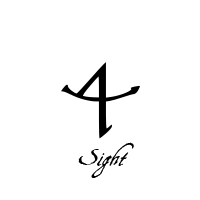 and hold.
and hold.
Mind Hardening
The mind is the furnace of universal energies. Just as it summons forth the change, so too is the forge flame-hardened.
Type: Art
Effect: The Wizard may call Discipline so long as he holds the final sign of this technique. If used, the signs must be reformed.
Requires: Initiate and hold.
and hold.
Unweave
There is no power greater than the dissolution of Self.
Type: Art
Effect: The Wizard may prematurely cancel their own spells before the duration elapses or before a Seal is triggered.
Requires: Initiate

Minacious Torch
Power makes manifest and judicious what they are to you, and you to them.
Type: Art
Effect: By activating a bright light in their Element’s color from an OOC prop held in one hand, The Wizard may maintain power that they have Channeled without it dissipating after the normal 3 Beats if unused.
Requires: Initiate
Traduction
The art to leaving a thicket without leaving too much blood behind is to see the time to move slowly back the way you came.
Type: Art
Effect: The Wizard may remove one point of Anacrusis from themselves or another character that they touch. When they do this, the character that lost Anacrusis gains one level of an Insanity related to the magics or relevant circumstances. This Insanity can be removed by normal means, and this process may be repeated as desired for more Anacrusis.
Requires: Initiate
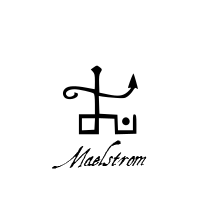

Ethereal Shroud
The Arts are intuitive because they are the Wizard, and the Wizard is the magic. How else but for magic itself to leap to defend you?
Type: Art
Effect: The Wizard cloaks themself in elementally charged energy that intercepts incoming spells. The shroud provides 3 uses of Arcane Block or Arcane Discipline that work only against incoming effects with Elemental Qualities (Flame, Water, Lightning, Stone). The shroud lasts for a Scene from time of invocation.
Requires: Initiate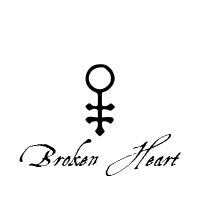
Condescend
The magician’s power is a tidal force. It draws in everything, and like a wave, its power can crash upon distant shores.
Type: Art
Effect: The Wizard may call Arcane Burn on another Magician to slow their casting of Spells. The Wizard may use this again, if successful, to inflict Arcane Suppression.
Requires: Initiate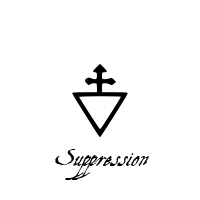
Refute
The mind is your fortress. Man well the walls and gates against intrusion.
Type: Art
Effect: The Wizard may guard themselves against meddling forces from other Wizard . As long as the Wizard has already performed the Ward sign and is holding it, they may call “No Effect” against calls targeting them with the Arcane Quality.
Requires: Initiate and hold.
and hold.
Dyadic Casting
The act of spellcasting is for your benefit, not the spell’s. It engages with you, just as you engage with it, until the two of you reach an understanding.
Type: Art
Effect: If the Wizard performs the Arcane Sign simultaneously to the Incantation during Channeling, they generate one additional Flux.
Requires: Initiate
Focal Transposition
The Tower and the Staff are commensurate in form and function – a focal nexus to cache and harmonize our magic, our thoughts, our Selves.
Type: Art
Effect: The Wizard may attune and control a single Focal Staff. Wizards with this Art may charge their Focal Staff with a single level of magical power – either one Flux, one Vortex, or one Maelstrom. While charged, the Staff must glow with an Elementally colored light. The Wizard may brandish their Staff in two hands and perform their Incantation to draw out the power within, just as if they had Channeled that power normally. Focal Staves are also used to link and interact with magical apparatuses in Wizard Towers.
Requires: Initiate

Solmization
The confusion you feel is the loss of your equilibrial temper and inharmonicity in your axioms. Reharmonize and match tortion appropriately.
Type: Art
Effect: The Wizard may perform an exercise that realigns themselves to recover from an arcane mishap. After performing this Art, the Wizard loses the Burn condition immediately.
Requires: Initiate
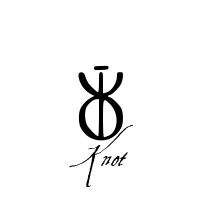



Seeker’s Arts
See the Arcane Codex for details. (Under Construction)
Incinerator’s Evocation
Ego sum fornax quae avertit se ad deglutiendum mundum et ardeat in aeternum
Philosopher’s Evocation
Lumen animae meae vertat omne mysterium in cinerem ut melius bibam veritatem
Beacon’s Evocation
Signum sum, quod evocet oculum, mentem, animam ad laetitiam
Warden’s Evocation
Gronit Undi Kazad nai Khazukan Bar Got wanrak Guz Khatül
Architect’s Evocation
Duraz gron Duraz azamar wanrak Magan Zorn Grungnaz a Or
Culler’s Evocation
Gronit Guz zank Zaraz, Gronit Vornzank zank Wulthrung, Gronit Uzgul zank Düm
Assassin’s Evocation
Ai batha amloth ai breitha galadh ai brith an gondram im le edledhia
Mastermind’s Evocation
Thû tîr ernil adel ammen treanim thû tîr ernil adel ammen anim dôr.
Manipulator’s Evocation
Ai elia’i ah antar prestanneth dadbenn natha’annarim o gwanath úthaes úvel
Sage’s Evocation
Menemaz tariq keanal haa tarakh ma gudram ta an cheaza rabaam keh jazar medadra zamama
Navigator’s Evocation
Menemaz hamh shraat ibiwar khawahm kerdta aankeh brum ah cheaz maqadam shawam
Monk’s Evocation
Azab skewun wajhana khwahm nwashad ta jsam biy peakea rawun barasad
Sigil
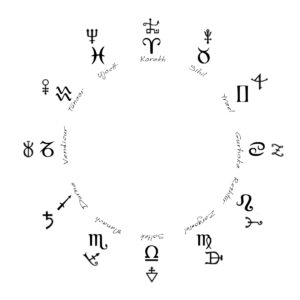
Thaumaturgics
Type: Art
Effect: After learning this Art, the Wizard’s Discipline expenditures to Channel generate 2 Fluxes instead of just one. In addition, the Wizard may, with just a gesture and the single Domain word, create any trivial effect of their choosing. These effects can achieve dramatic and narrative purposes such as burning a note, slamming a door, the sound of distant thunder, a scintillation of light, but cannot be strong enough to invoke actual firm Game Effect such as Pain or Knockdown.
Type: Art
Effect: The Wizard may resolve their own state of Suppression.
Requires: Seeker, Solmization





Type: Art
Ethereal Deflection
As the spell is nascent, it is imbalanced – it desires to find its destination and complete its expression. The Wizard reverses his own balance in adversity to the spell, then offers it another way to restore the balance it craves.
Type: Art
Effect: Upon calling Arcane Block or Arcane Discipline, you may call the spell’s effect on any other target in Speaking range.
Requires: Seeker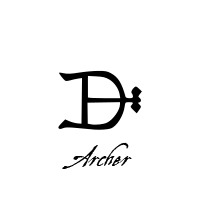
Rebuke
While tampering with the metaphysical forces between Wizards can be a powerful strategy, a capable Seeker will exploit such a connection to her advantage.
Type: Art
Effect: If the Ward Sign is complete and held when the Wizard would otherwise take a call with the Arcane Quality, they may call “No Effect” and may call the same effect on the originator.
Requires: Seeker, Refute and hold.
and hold.
Critique
You forget, my master, I have observed your every move and cant for years now. I have paid especially great attention to the lessons you have given – even those you never intended me to learn.
Type: Art
Effect: The Wizards performs the Signs, then “Unweave: ” and then the name of the spell they believes is active within Shouting distance. Any spells of that name within Shouting distance are ended immediately, as per the Unweave technique.
This Art may also be used to attempt to derive the name of a spell with which they are familiar through axiomatic means. As a Research Action, the Wizard may attempt to name the Element, Domain and a description of the Effect of a spell they believe exists. If every figure was correct, they learn the name of a spell that matches those parameters.
Requires: Seeker

The deeper you go into the arcane calculus the less you can ignore the remainder
Type: Art
Effect: After learning this Art, the Wizard may retain unspent mana even after casting a Theorem, but are still bound by all other restrictions.
Master’s Arts
Sinistration
The Signs are for our benefit alone.
Type: Art
Effect: The Wizard may now perform any Sign with only one hand instead of two by performing the exact gestures meant for just that one hand. Additionally, if the Wizard performs the Element Sign with one hand while simultaneously performing the Domain Sigil with their other, they may Channel a Vortex of power instead of 2 Fluxes. This requires that it be used on a spell that uses the appropriate Domain, or else the Channeling fails.
Requires: Master, Sigil
Gainsay
The nascent spell is meek, still willing to receive outside influences.
Type: Art
Effect: The Wizard may redirect a spell that is currently being cast by another Wizard to choose a new target for it of her choosing at the time of casting. They must have completed the Art and have the last Seal held when the spell is cast. Call “No effect” to the original target and then make the same effect call on the target of your choosing within Speaking Distance.
Requires: Master


Idiogaldra
Lower order expressions freight predictably more content. Let each synecdochical argument be its own functional expression, and step into a new world of eloquence.
Type: Art
Effect: The Wizard may offer a specialized Incantation that is exactly specific to the circumstances under which they are casting their spell. Doing so allows the Wizard to Channel a Vortex. See Arcane Codex for specific Incantation parameters (Under Construction.) This Art requires that the power be used on a spell that uses the appropriate Domain, or else the Channeling fails.
Requires: Master, Evocation
Adamantia
Let my will be a weapon. Let my mind be the jaw that never releases. My thoughts become knives; my soul become Form.
Type: Art
Effect: The Wizard may Channel a Vortex of power when they spend Discipline.
Requires: Master, Thaumaturgics
Catalytic Enthalpy
The material can be used to catalyze other rudiments, including acting as fluxus that naturally convenes to cracks and erosions.
Type: Art
Effect: The Wizard may expend a use of Elemental Catalyst and direct its energies at themselves or a character within close range. This character loses 1 point of Anacrusis.
Requires: Master
Domains
Flame Pain Havoc Fear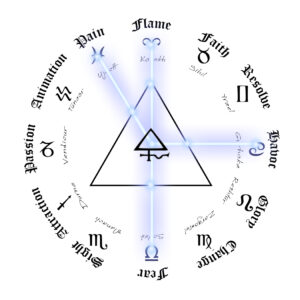
Glory Attraction Passion Resolve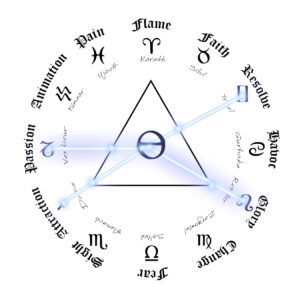
Change Animation Sight Faith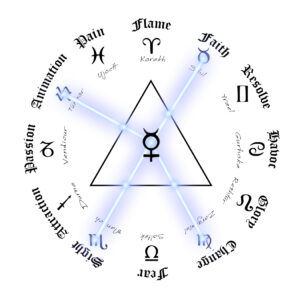
Animals Plants Strength Metal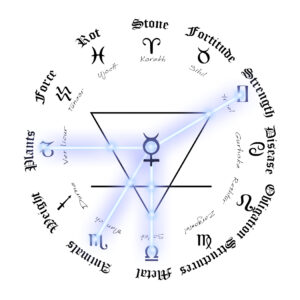
Structures Stone Weight Obligation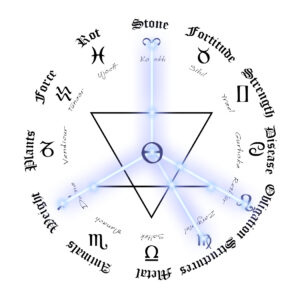
Rot Disease Force Fortitude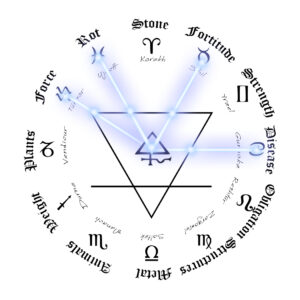
Communication Seeking Control Intellect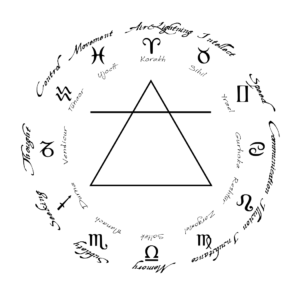
Thought Memory Illusion Lightning
Speed Movement Subtlety Insubstance
Water Paths Time Purpose
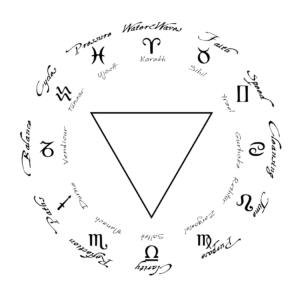
Faith Cycles Clarity Cleansing

Speed Pressure Reflection Balance

Wizards can only cast spells from Theorems that they have mastered the appropriate Domain for. As most Wizards have only mastered a subset of the possibilities, the Domains they use tend to form the basis of their contribution to their Guild, and their colleagues rely on them to perform those magics.
Arcane Techniques
Esoterica
While most scholars begin and end their quest for knowledge in what are called the Common Studies, the learning and academic disciplines most directly applicable to daily life within the Throne and the application of its skilled laborers. Wizards take these knowledges a step further, drawing on their understanding of what they call the outer mechanics of the world the world through magical experimentation, and then record these findings into specialized disciplines that help other Magicians of their Guild advance the art and practice of magical study.
Below are listed the most commonly needed Esoterics, and which Common Studies are required to learn them. Esoterics are Studies, and behave as such requiring a Research Project to learn. Unlike Common Studies, however, Esoterics always have prerequisite Common Studies which must be researched first before learning them can even begin. Esoteric Studies are not Rare, but this basic knowledge is needed to begin to understand them.
First Curricula
Circumlocution
Requirements: Rhetoric, Linguistics
Ergodicity
Requirements: Mathematics, Philosophy
Celestial Geometry
Requirements: Mathematics, Astrology
Metric Tensors
Requirements: Mathematics, Physics
Tectonics
Requirements: Geology, Physics
Thermionics
Requirements: Physics, Psychology
Solipsism
Requirements: Psychology, Philosophy
Astromantics
Requirements: Pneumatics, Psychology
Capacitance
Requirements: Physics, Hydraulics
Kairos
Requirements: Horology, Astrology
Scalar Forces
Requirements: Physics, Architecture
Epitaxy
Requirements: Geology, Architecture
Syllogistics
Requirements: Logic, Rhetoric
Homology
Requirements: Logic, Mathematics
Hermeneutics:
Requirements: Philosophy, Theology, Linguistics
Metagraphy
Requirements: Linguistics, Psychology
Thyristors
Requirements: Physics, Pneumatics
Fetishism
Requirements: Theology, Psychology
Chirology
Requires: Physiology, Anatomy
SECOND Curricula
Angular Frequency
Requires: Celestial Geometry
Exegesis
Requires: Hermeneutics
Tautology
Requires: Homology, Syllogistics
Teleology
Requires: Hermeneutics
Pyroclastics
Requires: Thermionics, Psychology
Cthonics
Requires: Tectonics, Psychology
Bathylics
Requires: Solipsism, Horology
Fulminology
Requires: Astromantics, Meteorology
Arrondissement
Requires: Homology, Tectonics
Resonance
Requires: Capacitance
Sidereal Time
Requires: Celestial Geometry, Horology
Epiphenomina
Requires: Resonance
Energetics
Requires: Scalar Forces
THIRD Curricula
Requires: Angular Frequency
Polymathetmatics
Requires: Angular Frequency, Metric Tensors
Eisegesis
Requires: Exegesis
Metanymics
Requires: Teleology
Chiasmics
Requires: Tautology
Interior Encoding
Requires: Circumlocution, Solipsism
Derivative Geometrics
Requires: Sidereal Time
Quaternion Invocations
Requires: Sidereal Time, Angular Frequency
Memetic Resonance
Requires: Fetishism, Resonance
Identity Negotiation
Requires: Metagraphy, Exegesis
Photonics
Requires: Physics
Deimotics
Requires: Psychology
Radial Reactions
Requires: Angular Frequency, Thermionics
Tension
Requires: Geology
Impetus
Requires: Meteorology
Seismology
Requires: Geology
Confabulonics
Requires: Psychology
Dolor
Requires: Philosophy
Nihilistics
Requires: Theology
Pyrolysis
Requires: Pyroclastics, Physiology
Tellurics
Requires: Cthonics, Architecture
Sempiternity
Requires: Bathylics, Kairos
Turbidity
Requires: Fulminology, Ergodicity
FOURTH Curricula
Eigenbasis
Requires: Irregular Recursions, Quaternion Invocations
Eschatology
Requires: Deimotics, Sempiternity
Spectrasonics
Requires: Resonance, Quaternion Invocations, Energetics
Umbral Calculus
Requires: Polymathetmatics,
Epiphenomina, Syllogistics
Thanatology
Requires: Deimotics, Memetic Resonance
Ontology
Requires: Metanymics, Eisegesis,
Identity Negotiation
Semiosis
Requires: Logic, Memetic
Resonance
Salience
Requires: Interior Encoding, Confabulonics, Identity
Negotiation
There are many Arcane Techniques that have been developed by enterprising and brilliant modern Wizards, the forefathers and Archmagi past, and even those handed down or stolen from the shadowy figures of the dawn of the Guilds during the Age of Witchkings. Arcane Techniques take on many forms and styles, and they fall into several categories.
| Name | Purpose |
|---|---|
| Lemmata | Minor, proven propositions that act as “auxiliary theorems” to make direct improvements upon the spell’s output. |
| Extractions | Techniques that harvest, exploit, or combine new sources of energies to be used for magic. |
| Forms | Techniques that reshape the spell into new shapes and forms of delivery |
| Praxes | Techniques that alter or improve the method of casting the spell itself |
| Seals | Techniques that suspend the spell’s effects until a certain condition occurs to break the seal. Each Seal may only store one spell at a time per Wizards using it. |
| Arts | Techniques that are felt rather than studied, performing feats of metamagical manipulation without being attached to a spell. |
Techniques are usually learned when a Wizard is within a certain Circle. Apprentices are expected to learn certain curricula while they are within a given Circle, and are usually provided with some level of access to those books and instruction from their immediate superiors. This basic curriculum is enough to provide the foundations for most of the Techniques that are generally expected at a given level of competency, but there are frequently side paths that are more elective in approach, and may thus require special books that the student may not have access to.
While Techniques are generally thus taught in given orders, many Wizards soon learn that politics within the Guilds, as well as the jealous and secretive nature of their peers and masters, make the process of completing one’s magical education anything but straightforward. Most Wizards have to do some level of continued service for their masters, as well as bribery, research, even blackmail or backstabbing, to continue to receive instruction past a certain point. Indeed, most Wizards end their career within the Third Circle, unable to break the glass ceiling protected by the elites of the Guild, who would like to keep their fellows at a happy medium between useful, competitive, and less powerful than they. Still, if a Wizard is savvy, lucky or ruthless enough, she may be able to secure books or instruction even far beyond those normally granted to those of her Circle, even learning the techniques of her masters – the better to one day force them to give up their secrets, or else overtake them entirely. So long as a Wizard meets the Esoteric requirements, she may learn any Technique regardless of its power.
Some Arcane Techniques are the secrets of a single Guild and are not commonly available outside of that Guild. These are tagged with a single Element, and are considered Rare for anyone not a member of that Guild. Other Guilds can learn these Techniques if they are able to steal or otherwise obtain the tomes of knowledge, and it would be a major coup for the Wizard who could do so.
Most Arcane Techniques other than Arts have a cost in Flux, Vortices and Maelstroms that they add to the base cost of the spell.
Initiate’s Curriculum
Circumlocution, Ergodicity, Celestial Geometry, Metric Tensors
Thermionics |
Tectonics |
Solipsism |
Astromantics |
Lemmatical Techniques
There is no limit to the number of Lemmata that can be applied to the same Theorem.
Spell Priming
Type: Lemma
Cost: Varies
Effect: This Technique allows the wizard to add Power to the effect of the Theorem by channeling additional magical energy into the spell. After expending the ordinary cost needed to activate a Theorem, the wizard may plant their feet and suspend the Theorem in a semi-cast state. At this time, as longas the wizard takes no steps they may continue channeling as if for a new Theorem. If they channel 3 Flux, they may Prime the spell again, adding 1 Power. Each additional Priming costs 2 additional Flux over the previous level and adds an additional level of Power. If the wizard suffers any combat Condition or takes any steps, the Theorem is lost.
Requires: Circumlocution, Capacitance
Reverberation
Type: Lemma
Cost: One Vortex
Effect: The Duration of an Enchantment is increased from One Scene to one Period (8 Hours).
Requires: Sidereal Time, Energetics
Perpetuation
Type: Lemma
Cost: One Maelstrom
Effect: The Duration of an Enchantment is increased until the end of the Event.
Requires: Sempiternity, Interior Encoding
Extension
Type: Lemma
Cost: One Flux
Effect: The Range of the Theorem increases from Speaking distance to Shouting distance. The Wizard may specify their target by name or description provided they can see them.
Requires: Scalar Forces, Thyristors
Intensity
Within the Theorem structure there are certain underpinning principles which allow for careful recalibration along linear values. While this work is delicate, the fact of its possibility has suggestive implications.
Type: Lemma
Cost: 1 Vortex
Effect: The Wizard may channel as indicated by the Theorem they are casting in order to utilize the Intensity effect instead of the standard one for that Theorem.
Note: Some Theorems require additional costs beyond this standard.
Requires: Ergodicity, Syllogistics, Hermeneutics
Supremacy
The original arrays of our academic lineage were premeditated with stability and safety in mind, and that security is associated with certain costs. Outsmarting the chaperoning principles of the Arcana can lead to gradific, if precarious, results.
Type: Lemma
Cost: 1 Maelstrom
Effect: The Wizard may channel as indicated by the Theorem they are casting in order to utilize the Supremacy effect instead of the standard one for that Theorem.
Note: Some Theorems require additional costs beyond this standard.
Requirements: Energetics, Exegesis, Memetic Resonance
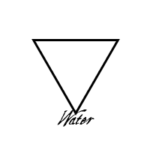 |
Pacification The Universal Water is merciful – it wants to teach, not to destroy. It draws all things closer to atma. It will naturally seek those paths which stretch on, not cease. Type: Lemma Cost: One Flux Effect: The spell gains Driving. Anyone Downed by this spell instead gains Blackout. Requires: Sempiternity, Dolor |
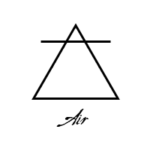 |
Silk Shade Never forget that inflicting unwished for control is always possible. Never forget. Type: Lemma Cost: One Vortex Effect: War magic uses compressed wind in the form of scything planes of air to cut and cleave invisibly instead of the usual lightning. Replace the Lightning Quality with the Stealth Quality. Onlookers do not see any visible effect other than injury occurring, and many Air Wizards use such effects alongside more mundane dangers to conceal their interference. Requires: Turbidity, Tension |
Techniques of Form
Only one Form may usually be applied to a Theorem at a time.
Linear Form
The Magician stretches a single point along the rotation of the planet, causing a single dimensional point to stretch into a two dimensional line before being pulled back into real space.
Type: Form
Cost: One Flux
Effect: Call the effects of spells once on every target in a two foot wide line out to the spell’s Range.
Requires: Celestial Geometry
Blasting Form
It is not technically possible to create a spell effect as large as this by direct means – instead, it is the spell itself which performs this feat recursively.
Type: Form
Cost: One Vortex
Effect: The spell is increased in size to an amorphous cloud, affecting all targets within around fifteen feet from the original target, which represents the center of the effect.
Requires: Angular Frequency, Tautology
 | Fork Influence is a function of opportunity and sympathy. Type: Form Cost: One Vortex Effect: The Wizard may fork the spell to affect any number of additional targets. Each additional target must be within two steps of the previous one and no target may be targeted by this Theorem more than once. Call the spell effect for each. Requires: Turbidity, Thermionics |
Lashing Form
In truth the Magician never stops casting the spell – she invokes the moment of the spell’s inception and simply reshapes that moment as needed.
Type: Form
Cost: One Vortex
Effect: The Wizard may direct the dance of her magics, like a conductor of an orchestra she cascades her magics through the area, able to maintain and redirect the spell at will at new targets. The Wizard roots their position in place in a horse stance. Until he moves, the Wizard may call a new target by channeling one Flux as if casting a new, identical Theorem each time.
Requires: Polymathematics
Sheathing Form
For this, the Magician simply recalculates the proportions and needs of the spell in real time, refactoring the angles and minutia along the designated currents and tides.
Type: Form
Cost: One Vortex
Effect: The Wizard may invoke a cage of sorcerous power around their target. The spell’s form sits only a breathe atop its target without actually touching them. Any character that physically interacts with the spell will automatically be struck by its forces. This form can be used fluidly on yourself or another to move with them as a sheathe, adding its effect to any who attack, grapple, or otherwise push into the spell’s space. Inflicting the Sheathing Form’s effects on others requires voluntary touch or a use of a Grab. The effects of your spell are assumed to hit simultaneously with whatever action caused them to be triggered, so standing ablaze in magical fire will not necessarily protect you from injury from an attacker, only scorch badly those fools who do. This Form may not be used on Enchantments. An active Sheathing Form requires visible and obvious glowing light all across your person.
Requires: Polymathematics, Irregular Recursions
Radiant Form
Let them fear us. Let them come, in their multitudes. The better to remind them what they are to us.
Type: Form
Cost: One Maelstrom
Effect: The Wizard, crackling with magical might, stands and throws their arms out in a mighty roar. The Spell is flung to every corner of its Range and affects every possible target, animate and inanimate. With the exception of the caster, all characters, friend and foe, are affected.
Requires: Umbral Calculus, Eigenbasis, Spectrasonics
Techniques of Praxis
 | Smolder Casting You must learn not to fear it. You must allow it to consume you. Allow it to consume everything. Type: Praxis Effect: The Wizard is wreathed in flame as she casts, able to Exert to call Flame Strike against any and each attacker in a Beat, even if the Wizard spends a Defense to not be harmed. Requires: Thermionics, Metric Tensors |
 | Elemental Axis Draw forth the deep, heavy weight of the Earth with your power. Beneath such a burden, there is only stillness. Type: Praxis Effect: The Wizard may stand in horse stance, without moving their feet, for three Beats in order to apply Power to their next Theorem cast. They must remain in horse stance for another three Beats to use this again. Requires: Tectonics, Metric Tensors, Chirology |
 | Serene Casting As you sink down and down further, as the sea takes you, the more you have surrendered, the deeper you have traveled inward. Type: Praxis Effect: The Wizard may ignore the effects of Traumatized, Fear, and Despair when casting this spell. Requires: Solipsism, Metric Tensors |
 | Subtle Casting Requires: Astromantics, Metric Tensors, Chirology |
Spell Plating
Maelstrom forces, already made treacherous by the act of praxis, can be used to project force along an interdicting plane as needed. However, even along a lattice, scalar forces such as these cause reverberation into the mind that exceed structural limitations.
Type: Praxis
Effect: The Wizard may call exert to call “Arcane Armor” against any Hits or Conditions while Channeling.
Requires: Scalar Forces, Epitaxy
Arcane Deflection
Type: Praxis
Effect: The Wizard may call Exert to call “Arcane Parry” against any Hits or Conditions while Channeling.
Requires: Ergodicity, Syllogistics, Spell Plating
Probabilistic Foresight
Type: Praxis
Effect: The Wizard may call Exert to call “Arcane Dodge” against any Hits or Conditions while Channeling.
Requires: Kairos, Capacitance
Profundity of Absence
As we successfully measure and express every adjacent concept to the profundity, the profundity itself becomes manifest in negative.
Type: Praxis
Effect: The Wizard may call Exert to call “Arcane Block” against any Hits or Conditions while Channeling.
Requires: Exegesis, Metanymics, Arcane Deflection
Concentration
The spell, too, is but a beast – no beast you keep fed will stay away for long.
Type: Praxis
Effect: The Wizard may suspend a Theorem’s culmination by focusing energy upon it, done by channeling more into it at a constant rate. The Wizard may Channel additional Flux in order to repeat the effects of the Theorem they have just cast with the exact same target location, range and modifying Techniques. Each additional Effect requires 1 Flux. This Technique may only be used on Forces.
Requires: Tautology, Energetics
Techniques of Extraction
Convoke
The Magicians share the burden of the forces of the spell, circulating the power within their small circle until each of them combines their efforts as a single Magician.
Type: Extraction
Effect: The Wizard may accept the assistance of other Wizards who know the Domain of this Theorem. So long as all Wizards involved channel exactly the same ways at exactly the same time, they may combine their Flux, Vortices and Maelstroms into casting a single Theorem cast by the Wizard who knows Convoke.
Requires: Angular Frequency, Resonance
 | Incarnate Mastery The Fire is consumption itself. It is capable of consuming anything – even limits. Type: Extraction Effect: The Wizard need channel one Flux to pay for a Form with a cost of one Vortex. Alternatively, the Wizard need only channel one Vortex to pay for a Form with a cost of one Maelstrom. Requires: Pyroclastics, Exegesis |
 | Geomancy The world is laid by forces, and set upon forces. Exploit and take these unseen resources, as you would any other of the earth’s wealth. Type: Extraction Effect: This spell is capable of taking advantage of Geomantic energy. Within any Wilderness area the Wizard may voluntarily suffer the effects of a Knockdown to manifest one Burden of Elemental Earth. Requires: Cthonics, Exegesis |
 | Time Mastery The world’s order is repeated not just chronically, but by scale, greater and smaller, outward and inward, from the deepest interior of the atma to the farthest Outside of Heshiyah. Type: Extraction Effect: The Wizard need only channel one Flux to pay for a Duration Elevation with a cost of one Vortex. Alternatively, the Wizard need only channel one Vortex to pay for a Duration Elevation with a cost of one Maelstrom. Requires: Bathylics, Exegesis |
 | Far Mastery Action is never about decision, but about conditions. When all of the conditions are met, an event has no choice but to happen. To predict the lightning strike, first understand the storm. Type: Extraction Effect: The Wizard may use Range extending Lemmata without channeling the usual one Flux to do so. Requires: Fulminology, Exegesis, Terminus |
 | Archform The flame is not fickle, no. She obeys only her master, whatever he desires Type: Extraction Effect: The Wizard may use a second Form with the same Theorem, and must only channel for the more expensive of the two. Requires: Pyrolysis, Eisegesis |
 | Absorption Structure is the ultimate rule of the universe. Even magic itself cannot disobey these ironbound laws, layer upon layer, truth upon truth until the greatest truth of all is exposed in the geometries. Type: Extraction Effect: The Wizard immediately gains one Flux whenever they use the Armor call from any source. Requires: Tellurics, Eisegesis |
 | Archseal All worlds intersect. Even impossible ones. Type: Extraction Effect: The Wizard may use two Seals on the same Theorem, paying only for the more expensive of the two. Each combination of two Seals counts as a unique Seal, multiplying the number of Seals a Wizard may have active at the same time. Double Seals are activated when either condition for the component Seals is met. Requires: Sempiternity, Eisegesis |
 | Archpraxis People cannot do what you do. They never could. Type: Extraction Effect: The Wizard may use two Praxes while casting a Theorem. If both Praxes require Exertion, you may Exert once to get the effects of both. Requires: Turbidity, Eisegesis |
Sealing Techniques
Only one of each Seal may be active at one time.
Outer Seal
In the practice of capacitance, the power is trapped by the presence of an uncertainty arrangement. Once certainty intrudes, the spell has no further choice but to complete.
Type: Seal
Effect: The cast spell is sealed within a specific closed, latched or physically sealed object. When the object is open, the seal breaks and the spell is cast at that time. Until the seal is broken, however, the spell remains dormant indefinitely, cast at whomever broke the Seal, so long as they are in Range of the spell. The seal will break automatically if the object is moved more than a few feet from the immediate area, such as a sealed book being taken from the room.
Requires: Capacitance, Ergodicity
Time Seal
The Outer Seal’s basis is an abstraction of the capacitance properties of the world itself, which unwinds itself along pre-determined paths and intervals. Sealing within these kairoi will break the Seal at the propitious time. It is thus evident that as time elapses, realities are entirely broken in its wake.
Type: Seal
Effect: The cast spell is suspended entirely at the location of casting until a predetermined amount of time has passed, at which point the spell activates.
Requires: Outer Seal, Kairos
Body Seal
When considered anatomically, the body is a machine that intakes and outputs nearly constantly. When considered metaphorically, the body is a single entity capable of powerful identity.
Type: Seal
Effect: The applied spell is Sealed within the body of the Wizard or another. If the body is broken – takes damage enough to cause Injury or to be Downed, or requires the use of Toughness, the spell is activated upon the one who damaged the body.
Requires: Solipsism, Arrondissement
Mind Seal
The Mind is a constructed set of identities, and thus subject to quantification.
Type: Seal
Effect: The applied spell is sealed, able to be released at the Wizard’s option under the condition that the mind suffers a breaking event, namely Fear, Blackout, gains an Insanity, Obey, or any form of possession or mind control. If the effect is resisted, the Mind Seal does not activate. If the Mind Seal provides a resistance such as Discipline, that may be used at once to resist the effect.
Requires: Derivative Geometrics, Eisegesis, Identity Negotiation
Spirit Seal
The Soul is the collective set of programming that supports egoistic stability, functioning as a grounding set to check incoming values against before ordinary process resolution. Simple then, to measure and collate.
Type: Seal
Effect: The applied spell is sealed, able to be released at the Wizard’s option under the condition that the Magician suffers from Despair, becomes Inspired, or any new Depravity.
Requires: Derivative Geometrics, Eisegesis, Dolor
Death Seal
There is only one seal deeper and darker than this.
Type: Seal
Effect: The spell is sealed until the target’s death, at which point it is triggered at once.
Requires: Eschatology, Salience, Thanatology
Arcane Signs
Signs are gestures performed with the hands that invoke arcane power. The gestures involve precise gestures with the hands and fingers, and they are used to work more specific effects into the spell that change the shape or other effects of the spell, or cause them to be come more powerful, protect the Magician while she casts, or other sorts of effects.
Performing Signs requires the full use of the Magicians hands and fingers, which means that she cannot work them while holding weapons or shields, or wearing any restrictive armor on the hands.
